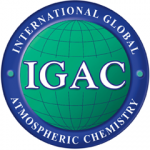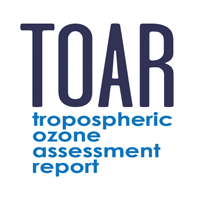A community-wide effort to quantify tropospheric ozone in a rapidly changing world.
Tropospheric ozone is a greenhouse gas and pollutant detrimental to human health and crop and ecosystem productivity. Since 1990 a large portion of the anthropogenic emissions that react in the atmosphere to produce ozone have shifted from North America and Europe to Asia. This rapid shift, coupled with limited ozone monitoring in developing nations and remote regions of the world, left the research community struggling to maintain an up-to-date assessment of ozone in the troposphere.
In response, the International Global Atmospheric Chemistry Project (IGAC) initiated TOAR in 2014 with a mission to provide the research community with an up-to-date scientific assessment of tropospheric ozone’s global distribution and trends from the surface to the tropopause. The assessment report has been published as a series of research papers. The findings are based on the most comprehensive collection of surface and free tropospheric ozone observations ever assembled. In a major advancement, TOAR has created a database containing a wide range of ozone exposure and dose metrics, calculated consistently for all available surface ozone monitoring sites around the world, and freely accessible for research on the global-scale impact of ozone on climate, human health and crop/ecosystem productivity.


Tropospheric ozone is a greenhouse gas and pollutant detrimental to human health and crop and ecosystem productivity. Since 1990 a large portion of the anthropogenic emissions that react in the atmosphere to produce ozone have shifted from North America and Europe to Asia. This rapid shift, coupled with limited ozone monitoring in developing nations, has left scientists unable to answer the most basic questions: Which regions of the world have the greatest human and plant exposure to ozone pollution? Is ozone continuing to decline in nations with strong emission controls? To what extent is ozone increasing in the developing world? How can the atmospheric sciences community facilitate access to the ozone metrics necessary for quantifying ozone’s impact on human health and crop/ecosystem productivity? TOAR is designed to answer these questions through the development of an assessment report based on expert opinion and analysis, and the generation of a range of ozone metrics at hundreds of sites around the world.
Mission
To provide the research community with an up-to-date scientific assessment of tropospheric ozone’s global distribution and trends from the surface to the tropopause.
Goals
Produce the first tropospheric ozone assessment report based on the peer-reviewed literature and new analyses. Generate easily accessible, documented data on ozone exposure and dose metrics at hundreds of measurement sites around the world (urban and non-urban), freely accessible for research on the global-scale impact of ozone on climate, human health and crop/ecosystem productivity.
Organization
TOAR is a science effort initiated by IGAC, and developed by an international team of experts. TOAR receives financial and logistical support from IGAC, the US National Oceanic and Atmospheric Administration, and The World Meteorological Organization (an agency of the United Nations).